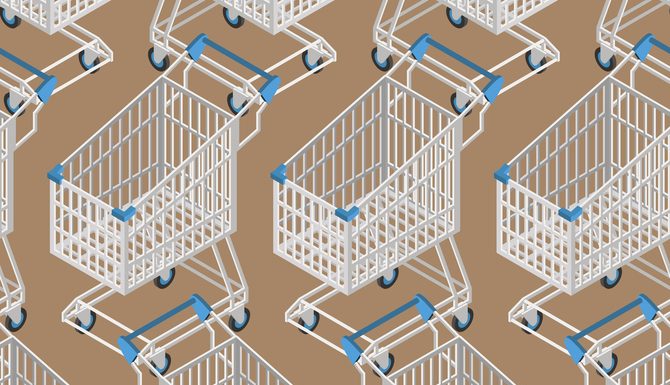What does your business focus on more, brining in new customers or keeping current ones? It’s an age-old question. Is customer acquisition more important than customer retention, or is it the other way around?
Both are important for businesses, but there’s mounting statistical evidence that shows customer retention is where it’s at. Plus, research suggests loyalty programs are one of the best ways to engage customers and keep them coming back.
Take a look at the statistics below that support a bigger focus on customer retention.
Surprising stats about the impact of repeat business
1. Sixty-one percent of SMBs report that more than half of their revenue comes from repeat customers, rather than new business. [BIAKelsey]
Sixty-one percent of SMBs report that more than half of their revenue comes from repeat customers – BIAKelsey Click To Tweet2. On average, loyal customers are worth up to 10x as much as their first purchase. [Marketing Tech Blog]
On average, loyal customers are worth up to 10x as much as their first purchase – Marketing Tech Blog Click To Tweet3. It can cost 5 times more to acquire new customers than it does to keep current ones. [The National Law Review]
It can cost 5x more to acquire new customers than to keep current ones – The National Law Review Click To Tweet4. A five percent increase in customer retention can increase a company’s profitability by 75 percent. [Bain & Company]
A 5% increase in customer retention can increase a company’s profitability by 75 percent – Bain & Co Click To Tweet5. Reducing your customer defection rate by five percent can increase your profitability by 25 to 125 percent. [DestinationCRM]
Reducing your customer defection rate 5% can increase your profitability 25-125 percent – DestinationCRM Click To Tweet6. Eighty two percent of companies agree that retention is cheaper to execute than acquisition. [Econsultancy]
Eighty two percent of companies agree that retention is cheaper to execute than acquisition – Econsultancy Click To Tweet7. The average repeat customer spends 67% more in their 31st-36th months of their relationship with a business than in months 0-6. [Bain & Company]
The average repeat customer spends 67% more in 31-36 months with a business than 0-6 months – Bain & Co. Click To Tweet8. Eighty-nine percent of customers begin business with a competitor following a poor customer experience. [Oracle]
89 percent of customers begin business with a competitor following a poor customer experience – Oracle Click To Tweet9. It takes 12 positive customer experiences to make up for one negative experience. [Parature]
It takes 12 positive customer experiences to make up for one negative experience – Parature Click To Tweet10. A two percent increase in retention has the same effect as decreasing costs by 10 percent. [Leading on the Edge of Chaos]
A 2% increase in retention has the same effect as decreasing costs by 10 percent – Leading on the Edge of Chaos Click To Tweet11. Forty-three percent of consumers are more likely to buy a new product when learning about it on social media. [Nielsen]
Forty-three percent of consumers are more likely to buy a new product when learning about it on social media – Nielsen Click To Tweet12. Word of mouth is the primary factor behind 20-50 percent of all purchasing decisions. [McKinsey]
Word of mouth is the primary factor behind 20-50% of all purchasing decisions – McKinsey Click To Tweet13. Customers are 77 percent more likely to buy a new product when learning about it from family and friends. [Nielsen]
Customers are 77% more likely to buy a new product when learning about it from family and friends – Nielsen Click To Tweet14. Ninety-two percent of consumers around the world say they trust earned media, such as word-of-mouth or recommendations from friends and family, above all other forms of advertising. [Nielsen]
92% of consumers say they trust word-of-mouth or recommendations from friends & family above all advertising – Nielsen Click To Tweet15. Sixty percent of mobile coupon users say they will “gladly switch brands to use a coupon.” [GfK]
Sixty percent of mobile coupon users say they will 'gladly switch brands' when given a coupon – GfK Click To TweetIntriguing stats on customer retention through loyalty programs
16. Eighty six percent of consumers say loyalty is primarily driven by likability and 83 percent of consumers say trust. [Rare]
Eighty six percent of consumers say loyalty is primarily driven by likability and 83% say trust – Rare Click To Tweet17. Seventy-seven of people are considered brand loyal…of these, 37 percent make repeat purchases and are loyal to a company. [Facebook]
Seventy-seven percent of people are considered brand loyal – Facebook Click To Tweet18. Millennials are 1.75x more likely than Boomers to say they’d like to be brand-loyal. [Facebook]
Millennials are 1.75x more likely than Boomers to say they’d like to be brand-loyal – Facebook Click To Tweet19. Seventy-seven percent of consumers like when brands demonstrate their appreciation. [TD Bank]
Seventy-seven percent of consumers like when brands demonstrate their appreciation – TD Bank Click To Tweet20. Fifty-two percent of customers have switched businesses in the past year due to poor customer service. [Accenture]
Fifty-two percent of customers have switched businesses in the past year due to poor customer service – Accenture Click To Tweet21. The estimated cost of customers switching due to poor service is $1.6 trillion. [Accenture]
The estimated cost of customers switching due to poor service is $1.6 trillion – Accenture Click To Tweet22. Seventy-five percent of U.S. companies with loyalty programs generate a positive return on investment. [Loyalty 360]
Seventy-five percent of U.S. companies with loyalty programs generate a positive return on investment – Loyalty 360 Click To Tweet23. Sixty-four percent of retailers say their loyalty program is their best method of connecting with customers. [SPS Commerce]
Sixty-four percent of retailers say their loyalty program is the best method to connect with customers – SPS Commerce Click To Tweet24. Sixty-eight percent of businesses allocate less than 20 percent of their marketing budgets to loyalty, although 58 percent of companies say that 20 percent or more of their overall sales or revenue is due to their loyalty program. [Loyalty 360]
68% of businesses allocate 20% of budget to loyalty, yet say 20% of revenue is due to their loyalty program – Loyalty360 Click To Tweet25. Points accumulated for free merchandise or travel (47%) and automatic discounts at time of purchase (41%) are the top reasons for signing up for a rewards program. [Vantiv]
Free merchandise, travel, and automatic discounts are the top reasons for signing up for a rewards program. – Vantiv Click To Tweet26. Consumers said that savvy shoppers (34.5%), followed by credit card companies (27%), brands (26%) and wealthy people (12%) benefit most from customer reward programs [Colloquy]
Consumers say savvy shoppers, credit card companies, brands, and wealthy people benefit most from rewards programs – Colloquy Click To Tweet27. Seventy-six percent of customers plan to continue use of their reward programs in 2017, while 12 percent said they’d participate more. [Colloquy]
Seventy-six percent of customers say they'll use their rewards programs in 2017, 12 percent will participate more – Colloquy Click To TweetTips to set up a loyalty program
Whether you’re interested in setting up a loyalty program for the first time, or want to upgrade your outdated punch card system, here are a few tips to create a program that customers will love:
- Create a program that offers discounts to loyal customers. Research shows 57 percent of customers sign up for a program to save money.
- Set up a program that’s tied to an app. Sixty percent of consumers say they’re more likely to join a loyalty program that’s tech-savvy.
- Make sure the program works alongside your point-of-sale system, so it’s easy to use.
- Look for a program that allows you to communicate with your customers too.
- Loyalty programs provide a great way to gather customer data, so make sure the program you set up offers easy-to-read reports so you can get to know your customers on a personal level.
What kind of customer retention efforts will you make this year? Tell us your plans in the comment section below.






[…] this is important because, for most of the small businesses, about 60-70% of their future profits come from their existing customers. Not just that, acquiring a new customer is about five times costlier than retaining an existing […]